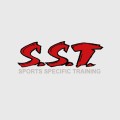Stretching for Athletic Performance: The Upper Body
This series on how to incorporate static stretching to improve athletic performance was begun a couple of months ago. The reasons behind this series are simply that, over the last few years, static stretching has gotten a bad rap in strength and conditioning circles and to show how we can use static stretching to enhance performance rather than detract from it. The first two parts of this series looked at the basic guidelines of a static stretching routine and stretches for the lower body. In this final installment, we will cover static stretching for the upper body.
Just to recap, the purpose of static stretching is not to warm-up for athletic activity; it is to lengthen those muscles that were shown to be overly short at the conclusion of our initial assessment at SST. It is important to note that we do not incorporate a shotgun approach and static stretch every single muscle group. Depending on the areas of tightness of the individual, stretches for only a single muscle group might be prescribed.
With our recap complete, let’s get into the common trends and then the actual stretches!
Common Trends:
- Tight pectoralis major Part 1
- Tight latissimus dorsi Part 2
- Tight upper traps/levator scapulae
Tight Upper Traps/Levator Scapulae
The upper traps and levator scapulae are two different muscles which get tight under the same general conditions, again associated with poor seated posture. First, the upper traps are easily found at the upper back to either side of the spine. The levator scapulae, on the other hand, is neither as well known nor easily found; it lies deeper than the traps and the superficial neck extensor muscles.
To stretch the upper traps, simply pull the shoulder blade, on the side you want to stretch, down towards your butt and then lean your head (or gently pull it with your opposite side arm) diagonally towards the non-stretch side armpit (think chin to armpit).
To stretch your levator scapulae, take a similar set-up as the upper trap stretch, placing the stretch side hand behind your lower back and depressing the shoulder blade. With the other hand, gently pull the head towards the non-stretch side armpit (again, think chin to armpit). Like the other stretches; 10-15 seconds, release, and perform another 1 or 2 reps.
SST has been very fortunate to have trained thousands of hockey athletes throughout their 8 locations in Canada. We, at SST, wish everyone a great summer and remind you to concentrate on your off –ice training. Please check out our website www.sst.training for more info about SST’s High Performance Summer Camp!
Learn how to become faster by dragging a sled, tire flipping, fire hose dragging, car dragging and much more!
Our locations include:
Burlington http://sst.training/burlington.php
Hamilton ; http://sst.training/hamilton.php
Laval ; http://sst.training/laval.php
Milton ; http://sst.training/milton.php
Mississauga; http://sst.training/mississauga.php
Oakville ; http://oakville.sst.training/
Richmond Hill; http://sst.training/richmondhill.php
Waterloo; http://sst.training/waterloo.php



